
A block of mass m is on an inclined plane of angle $\theta $. The coefficient of friction between the block and the plane is $\mu $ and $\tan \theta > \mu $. The block is held stationary by applying a force P parallel to the plane. The direction of force pointing up the plane is taken to be positive. As P is varied from ${{P}_{1}}=mg\left( \sin \theta -\mu \cos \theta \right)$ to ${{P}_{2}}=mg\left( \sin \theta +\mu \cos \theta \right)$, the frictional force f versus P graph will look like
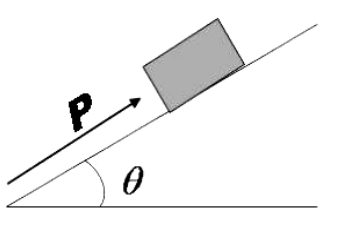
A.
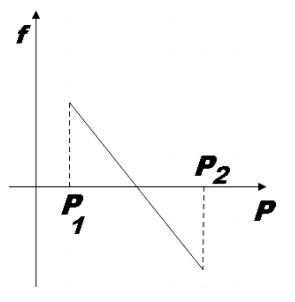
B.
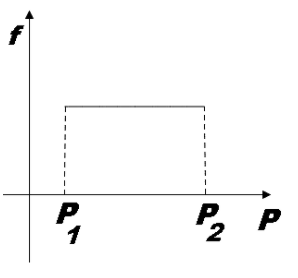
C.
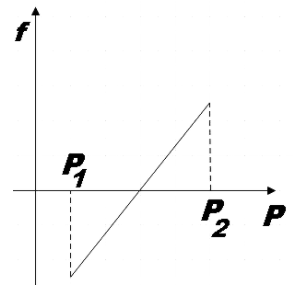
D.
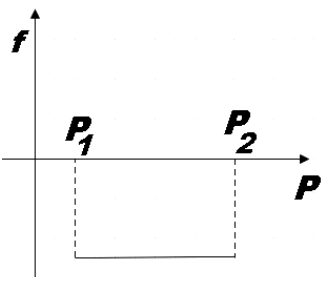





Answer
559.8k+ views
Hint: We know that when force P that was used to keep the block stationary on the plane is increased the block will move up the plane. You could make free body diagrams for both cases and then compare. Also, you could clearly understand the variation of f with P and hence find the correct plot representing the same.
Complete answer:
In the question we are given a block of mass m kept on an incline plane of angle $\theta $ and the coefficient of friction between the lock and the plane is given as$\theta $. The block is being applied with a force P parallel to the plane to keep it from sliding. Now P is varied. We have to identify which among the given graphs correctly represent the frictional force f versus P graph.
When the block is kept stationary by P, the free body diagram could be given by,
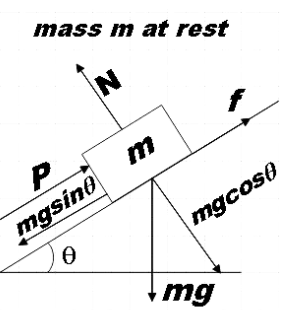
Now we could balance all the forces.
Perpendicular to plane we have,
$N=mg\cos \theta $………………. (1)
Parallel to plane we have,
${{P}_{1}}+f=mg\sin \theta $
$\Rightarrow f=mg\sin \theta -{{P}_{1}}$ ……………………. (2)
Now when we increase P, the block will move up the incline plane from rest and the frictional force which normally opposes the relative motion between surfaces changes direction. Therefore the FBD now becomes,
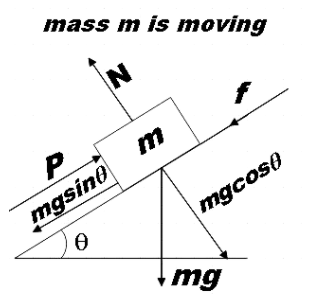
Here,
$f={{P}_{2}}-mg\sin \theta $ …………………………… (3)
In comparison with (2) we see that frictional force has changed direction.
So for force ${{P}_{2}}$ we have the same magnitude for frictional force as ${{P}_{1}}$ but will be negative as we are given that the direction of force pointing up the plane is taken to be positive. So the graph that aptly represents the variation of f with P will be,
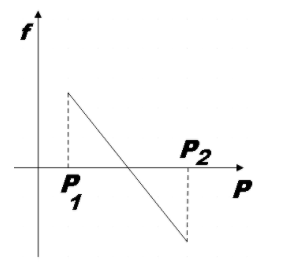
Hence, option A is the right answer.
Note:
We know that the frictional force is given by,
$f=\mu N$
Where, N is the normal force. We could substitute the normal force from (1) to get,
$f=\mu mg\cos \theta $
Also, by substituting this in (2) and (3), we get the same ${{P}_{1}}$ and ${{P}_{2}}$ as given in the question.
Complete answer:
In the question we are given a block of mass m kept on an incline plane of angle $\theta $ and the coefficient of friction between the lock and the plane is given as$\theta $. The block is being applied with a force P parallel to the plane to keep it from sliding. Now P is varied. We have to identify which among the given graphs correctly represent the frictional force f versus P graph.
When the block is kept stationary by P, the free body diagram could be given by,

Now we could balance all the forces.
Perpendicular to plane we have,
$N=mg\cos \theta $………………. (1)
Parallel to plane we have,
${{P}_{1}}+f=mg\sin \theta $
$\Rightarrow f=mg\sin \theta -{{P}_{1}}$ ……………………. (2)
Now when we increase P, the block will move up the incline plane from rest and the frictional force which normally opposes the relative motion between surfaces changes direction. Therefore the FBD now becomes,

Here,
$f={{P}_{2}}-mg\sin \theta $ …………………………… (3)
In comparison with (2) we see that frictional force has changed direction.
So for force ${{P}_{2}}$ we have the same magnitude for frictional force as ${{P}_{1}}$ but will be negative as we are given that the direction of force pointing up the plane is taken to be positive. So the graph that aptly represents the variation of f with P will be,

Hence, option A is the right answer.
Note:
We know that the frictional force is given by,
$f=\mu N$
Where, N is the normal force. We could substitute the normal force from (1) to get,
$f=\mu mg\cos \theta $
Also, by substituting this in (2) and (3), we get the same ${{P}_{1}}$ and ${{P}_{2}}$ as given in the question.
Recently Updated Pages
Why are manures considered better than fertilizers class 11 biology CBSE

Find the coordinates of the midpoint of the line segment class 11 maths CBSE

Distinguish between static friction limiting friction class 11 physics CBSE

The Chairman of the constituent Assembly was A Jawaharlal class 11 social science CBSE

The first National Commission on Labour NCL submitted class 11 social science CBSE

Number of all subshell of n + l 7 is A 4 B 5 C 6 D class 11 chemistry CBSE

Trending doubts
What is meant by exothermic and endothermic reactions class 11 chemistry CBSE

10 examples of friction in our daily life

One Metric ton is equal to kg A 10000 B 1000 C 100 class 11 physics CBSE

1 Quintal is equal to a 110 kg b 10 kg c 100kg d 1000 class 11 physics CBSE

Difference Between Prokaryotic Cells and Eukaryotic Cells

What are Quantum numbers Explain the quantum number class 11 chemistry CBSE




